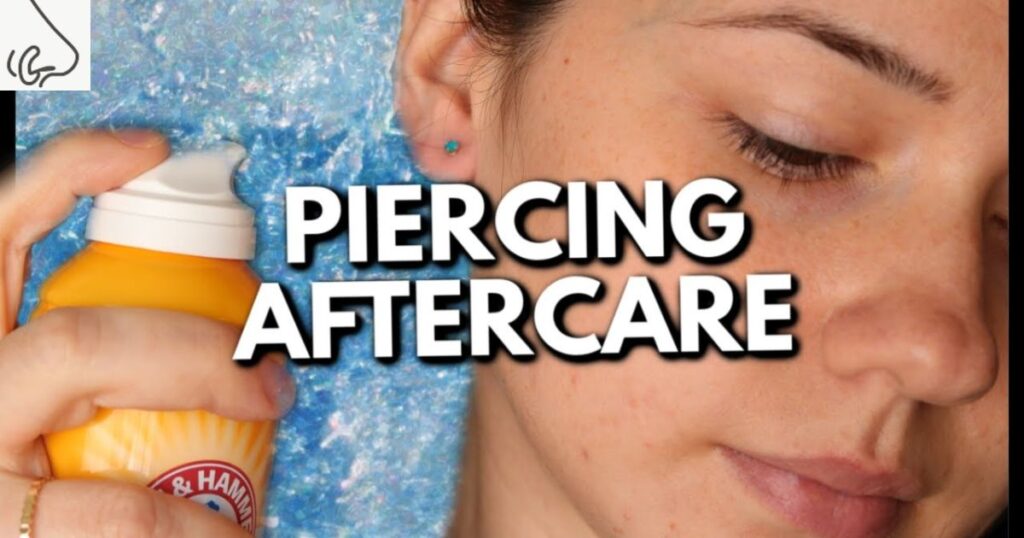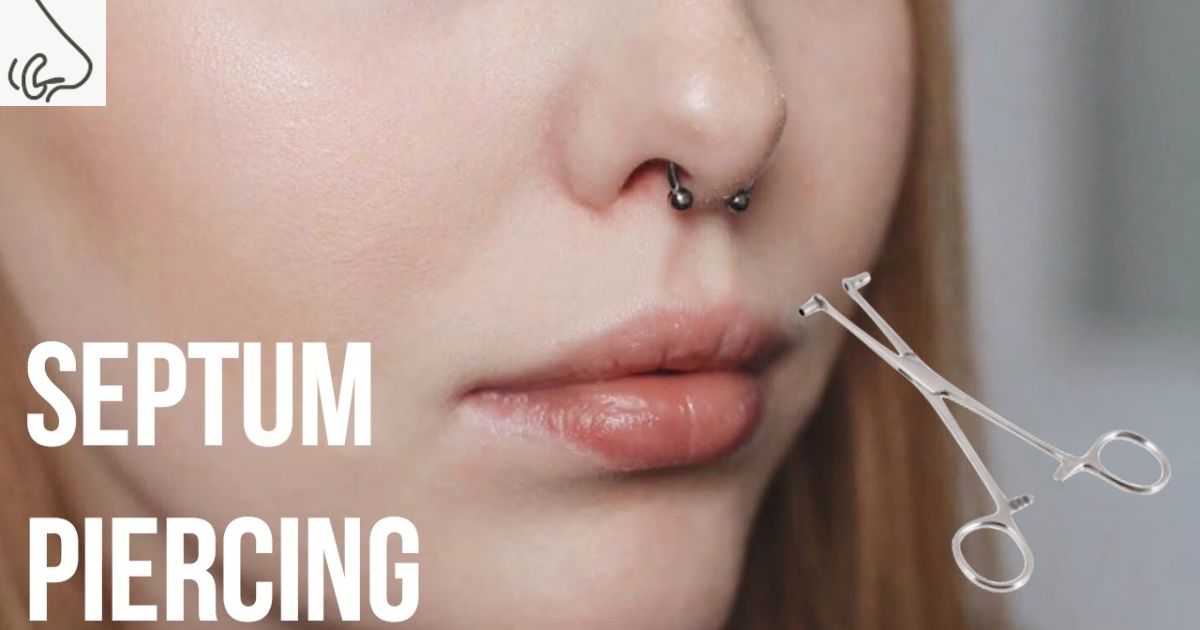Septum piercings have gained popularity in recent years, with many people embracing this unique and stylish form of self-expression. However, life circumstances can change, and you might find yourself wondering what happens to your septum piercing after a year or more. Will it close up? In this article, we will explore the world of septum piercings, focusing on the closure process and what you need to know if you’re considering removing or temporarily abandoning your septum piercing. Additionally, we’ll address the issue of “Your Nose Piercing Smells After 2 Years” and provide insights on how to maintain septum piercing hygiene.
Understanding the Septum Piercing
| Topic | Information |
| Understanding the Septum Piercing | – Septum piercings should always be performed by a professional piercer experienced in septum piercings. This ensures the procedure is done safely and accurately.<br> – The healing time for a septum piercing typically ranges from 6 to 8 weeks, but it can vary depending on individual factors.<br> – After the piercing, you’ll wear a retainer or a circular barbell designed for septum piercings.<br> – Proper aftercare is crucial for preventing infections and ensuring a smooth healing process. |
| Reasons for Septum Piercing Removal | – People may choose to remove their septum piercings for various reasons, including professional or workplace requirements, personal style evolution, health concerns, or special occasions. |
| Closure of a Septum Piercing | Time Frame for Closure:<br> – The time it takes for a septum piercing to close up after a year or longer varies depending on several factors, including healing and maturity, individual variability, jewelry type, and scar tissue.<br> Partial vs. Complete Closure:<br> – Septum piercings can experience either partial or complete closure. Partial closure means the piercing site narrows but doesn’t close completely, while complete closure means the piercing has fully closed, and there is no visible or functional hole left. |
| Factors Affecting the Closure Process | – Several factors can affect how quickly or completely a septum piercing closes, including piercing age, jewelry type, tissue elasticity, and scar tissue. |
| The Reinsertion Process | Reinserting a Retainer:<br> – It’s advisable to consult with a professional piercer experienced in septum piercings for guidance. They may use a taper tool to guide the retainer back through the piercing. Be prepared for some discomfort, especially if there is scar tissue.<br> Re-Piercing the Septum:<br> – In cases of complete closure, re-piercing the septum becomes necessary if you wish to have the piercing again. Always consult with an experienced piercer, and be prepared for a more challenging piercing experience due to the presence of scar tissue. |
| Aftercare for Re-Piercing | – Proper aftercare is essential for a successful outcome. This includes cleaning the piercing or reinserted jewelry regularly with saline solution or a recommended antiseptic solution, avoiding touching the piercing with dirty hands, and monitoring for signs of infection. |
| FAQs | – Frequently asked questions about septum piercing closure, reinsertion, re-piercing, healing time, and infection prevention are answered in this section. |
| Conclusion | – Summarizes the key points of the article, emphasizing that understanding the closure process and following proper aftercare are essential for maintaining a healthy and stylish septum piercing experience. |
The Septum Piercing Procedure
Before we delve into the closure process, it’s essential to understand how septum piercings work:
- Professional Piercing: Septum piercings should always be performed by a professional piercer experienced in septum piercings. This ensures the procedure is done safely and accurately.
- Healing Time: The healing time for a septum piercing typically ranges from 6 to 8 weeks, but it can vary depending on individual factors.
- Initial Jewelry: After the piercing, you’ll wear a retainer or a circular barbell designed for septum piercings.
- Aftercare: Proper aftercare is crucial for preventing infections and ensuring a smooth healing process.
Reasons for Septum Piercing Removal
People may choose to remove their septum piercings for various reasons, including:
- Professional or Workplace Requirements: Some jobs or industries have strict policies regarding visible piercings, leading individuals to temporarily or permanently remove their septum jewelry.
- Personal Style Evolution: Personal style can evolve over time, and some individuals may choose to remove their septum piercing to embrace a new look.
- Health Concerns: In some cases, health concerns or allergies may necessitate the removal of septum jewelry.
- Special Occasions: For specific events or occasions, individuals may prefer not to wear septum jewelry.
Closure of a Septum Piercing
Time Frame for Closure
The time it takes for a septum piercing to close up after a year or longer varies depending on several factors:
- Healing and Maturity: The piercing’s age and the extent to which it has healed and matured play a significant role in how long it takes to close.
- Individual Variability: Each person’s body is unique, and the rate at which a septum piercing closes can differ from one individual to another.
- Jewelry Type: The type of jewelry worn in the piercing may influence the closure process. A retainer is less likely to slow down the closure compared to a thicker or decorative septum ring.
- Scar Tissue: The presence of scar tissue from the initial piercing can impact the closure process. Scar tissue may require more time to dissolve or reform.
Partial vs. Complete Closure
Septum piercings can experience either partial or complete closure. Here’s what each entails:
- Partial Closure: In cases of partial closure, the piercing site narrows but doesn’t close completely. This means that it may still be possible to reinsert jewelry with minimal discomfort.
- Complete Closure: Complete closure means that the piercing has fully closed, and there is no visible or functional hole left. Reinserting jewelry would require repiercing the septum.
Factors Affecting the Closure Process
Several factors can affect how quickly or completely a septum piercing closes:
- Piercing Age: The age of the piercing is a significant factor. A septum piercing that has been in place for several years will close more slowly than a relatively new one.
- Jewelry Type: As mentioned earlier, the type of jewelry worn can influence closure. A retainer or thinner jewelry may lead to quicker closure.
- Tissue Elasticity: The elasticity of your septum tissue can vary from person to person. More elastic tissue may facilitate faster closure.
- Scar Tissue: Scar tissue, if present, can slow down or complicate the closure process.
The Reinsertion Process
If you’ve removed your septum jewelry and wish to reinsert it after two years, you may need to go through a reinsertion process. Here’s what you should consider:
Reinserting a Retainer
- Consult a Professional: It’s advisable to consult with a professional piercer experienced in septum piercings. They can assess the status of the piercing and provide guidance on reinsertion.
- Tapering: In some cases, piercers may use a taper tool to guide the retainer back through the piercing.
- Pain and Discomfort: Reinserting jewelry into a septum piercing may be uncomfortable or slightly painful due to the potential presence of scar tissue.
- Aftercare: After reinsertion, follow proper aftercare to ensure the healing process is smooth.
Re-Piercing the Septum
In cases of complete closure, re-piercing the septum becomes necessary if you wish to have the piercing again. Here’s what you should know:
- Consult a Professional: Always consult with an experienced piercer for the re-piercing procedure. They will assess your septum and guide you through the process.
- Scar Tissue: Be prepared for a more challenging piercing experience due to the presence of scar tissue. This may make the procedure slightly more painful.
- Healing Time: After re-piercing, follow proper aftercare to facilitate the healing process. Healing times can vary, but they typically range from 6 to 8 weeks or longer.
Aftercare for Re-Piercing

Whether you’re reinserting a retainer or getting re-pierced, proper aftercare is essential for a successful outcome:
- Cleaning: Clean the piercing or reinserted jewelry regularly with saline solution or a recommended antiseptic solution.
- Hands Off: Avoid touching the piercing with dirty hands to prevent infection.
- Monitor for Infection: Be vigilant for signs of infection, such as redness, swelling, pain, and discharge.
- Professional Guidance: Always follow the advice and instructions provided by your piercer.
FAQs
- Will my septum piercing close up after a year of having it?
-
- The closure of a septum piercing varies from person to person and depends on factors like piercing age, jewelry type, and individual variability. It may partially or completely close.
- How can I reinsert a retainer into my septum piercing after removal?
-
- Consult a professional piercer for guidance. They may use a taper tool to guide the retainer back through the piercing. Be prepared for some discomfort, especially if there is scar tissue.
- If my septum piercing has completely closed, can I get it re-pierced?
-
- Yes, you can get your septum re-pierced if it has completely closed. Consult an experienced piercer, and be aware that the presence of scar tissue may make the procedure slightly more painful.
- What is the typical healing time after re-piercing a septum?
-
- The healing time after re-piercing a septum can vary, but it typically ranges from 6 to 8 weeks or longer. Proper aftercare is essential for a successful healing process.
- How can I prevent infection and ensure a healthy septum piercing experience?
-
- Regularly clean the piercing or reinserted jewelry with saline solution or a recommended antiseptic solution. Avoid touching it with dirty hands, and always follow the advice and instructions provided by your piercer.
Conclusion
Septum piercings are a fashionable form of self-expression, but they are not necessarily permanent. If you’re wondering whether a septum piercing will close up after a year or longer, the closure process depends on various factors, including the age of the piercing, the type of jewelry, and individual variability. Closure can be partial or complete, and the reinsertion or re-piercing process should be approached with care and guidance from a professional piercer.
Whether you choose to retain your septum piercing or remove it for a time, understanding the process and following proper aftercare will help you maintain a healthy and stylish septum piercing experience.



















